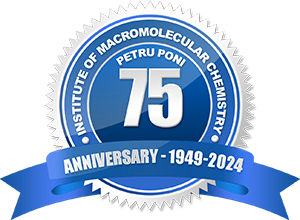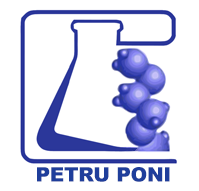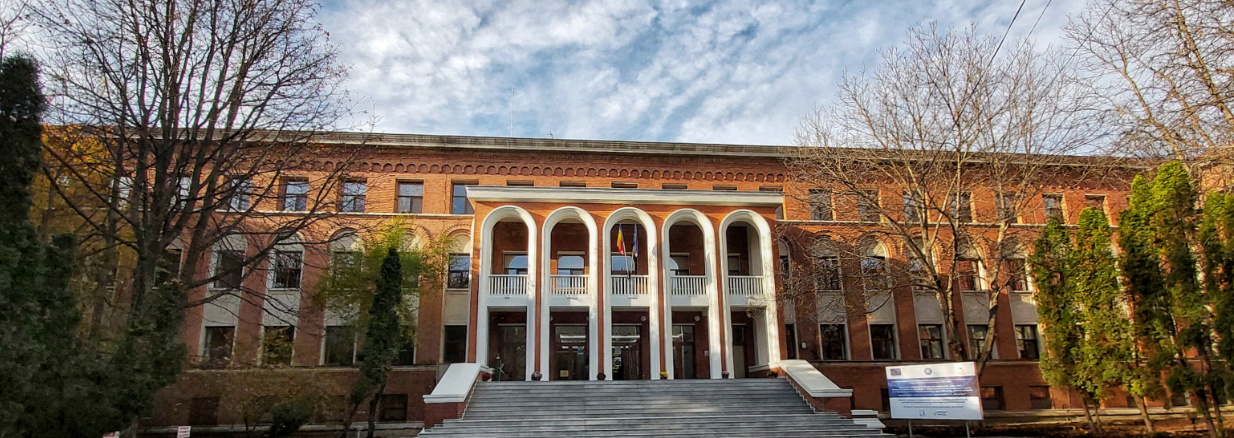Stage 1 (2023) of the research project ”Volatile organic compounds from extracellular vesicles as a source of additional diagnostic information” acronym Volatevs was entitled ”Release of organic volatile compounds from extracellular vesicles”. Various aspects were considered, related with extracellular vesicles, organic volatile compounds that they contain and the possibility to use them as biomarkers in metabolomi and volatolomic analysis. Identification of suitable parameters for the release of the organic volaile compounds from the extracellular vesicles and their concentration using solid phase microextraction fibres for the trasfer to a gas chromatograph coupled with a mass spectrometry detector was also performed.
Stage 2 (2024) - Final report
The “Volatile organic compounds from extracellular vesicles as a source of additional diagnostic information” (Volatevs) research project starts from the implementation at “Petru Poni” Institute of Macromolecular Chemistry, Iași of the European project “Analysis of the volatile organic compounds emitted by extracellular vesicles for disease diagnosis” (HORIZON-MSCA-2021-SE-01-01: 101086360 VOLATEVS). Support activities are considered, especially regarding the improvement of the procedures for gas chromatography (GC) analysis of the volatile organic compounds emitted by the extracellular vesicles (EVs).
Experimental works considered testing several methods for capturing and transfer the organic compounds from the EVs to the GC using the solid phase microextraction (SPME) technique. Special attention was paid to the challenges related with contamination of the analysis system or of the samples. The main factors affecting the analysis were identified, for example the heavy compounds remained fixed on the chromatographic column from previous analyses and, especially the compounds from the SPME fiber or from sample contamination during storage or maturation. An alternative method was proposed to avoid these drawbacks. Preliminary tests were performed by the technique of analytical pyrolysis coupled with gas chromatography and mass spectrometry detection (Py-GC/MSD). This allows sample maturation at the desired temperature and time, for the release of the volatile compounds from the EVs matrix directly in the inlet port of the GC equipment. This strongly simplifies the analytical protocol and avoids the external contamination. Preliminary tests performed on precious wood confirmed the validity of the method. The volatile organic compounds released by prolonged exposure (60 min) of EVs at 60 °C were chromatographically separated and identified. A strong contribution of C9 - C17 aldehydes was found, these compounds being responsible for the specific smell of the precious wood. The new analysis method developed within the 25PHE support project will be implemented in the HORIZON-MSCA European project for characterization of the organic volatile compounds released by the extracellular vesicles.
Besides the experimental work, the support project also considered the training of research staff. The project director participated to the “Training course on metabolomics analysis - Practical activities: Analysis of the volatile organic compounds emitted by extracellular vesicles” organised in Panama, November 2023. Also, the project director and a researcher involved in the activities of the project participated to the “Workshop on volatolomics research in biomedical applications” organised in Tartu, Estonia, in April 2024, and to the “Workshop on vibrational spectroscopy techniques for disease diagnosis”, organised in Lund, Sweden, in October 2024.
The research project also helped for the dissemination of one conference and one oral communication at two international scientific symposia in 2024. | 







